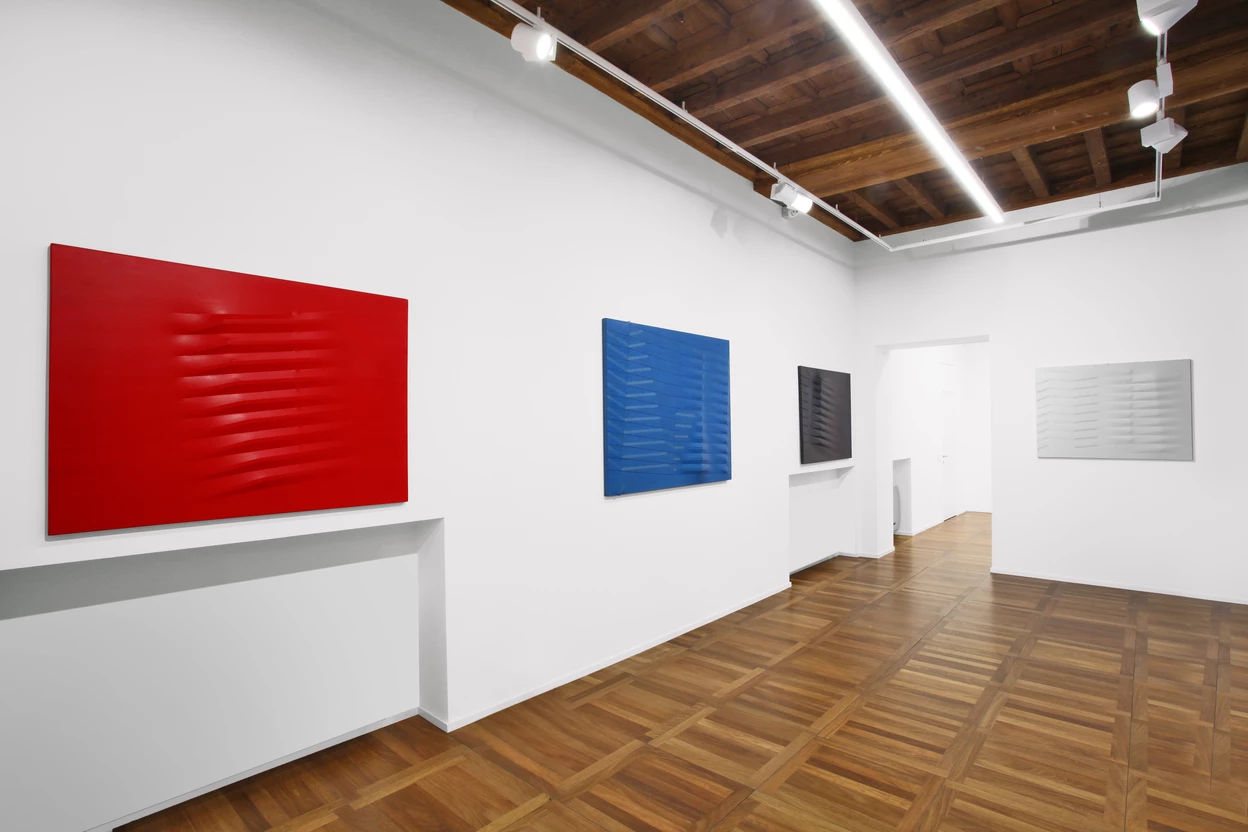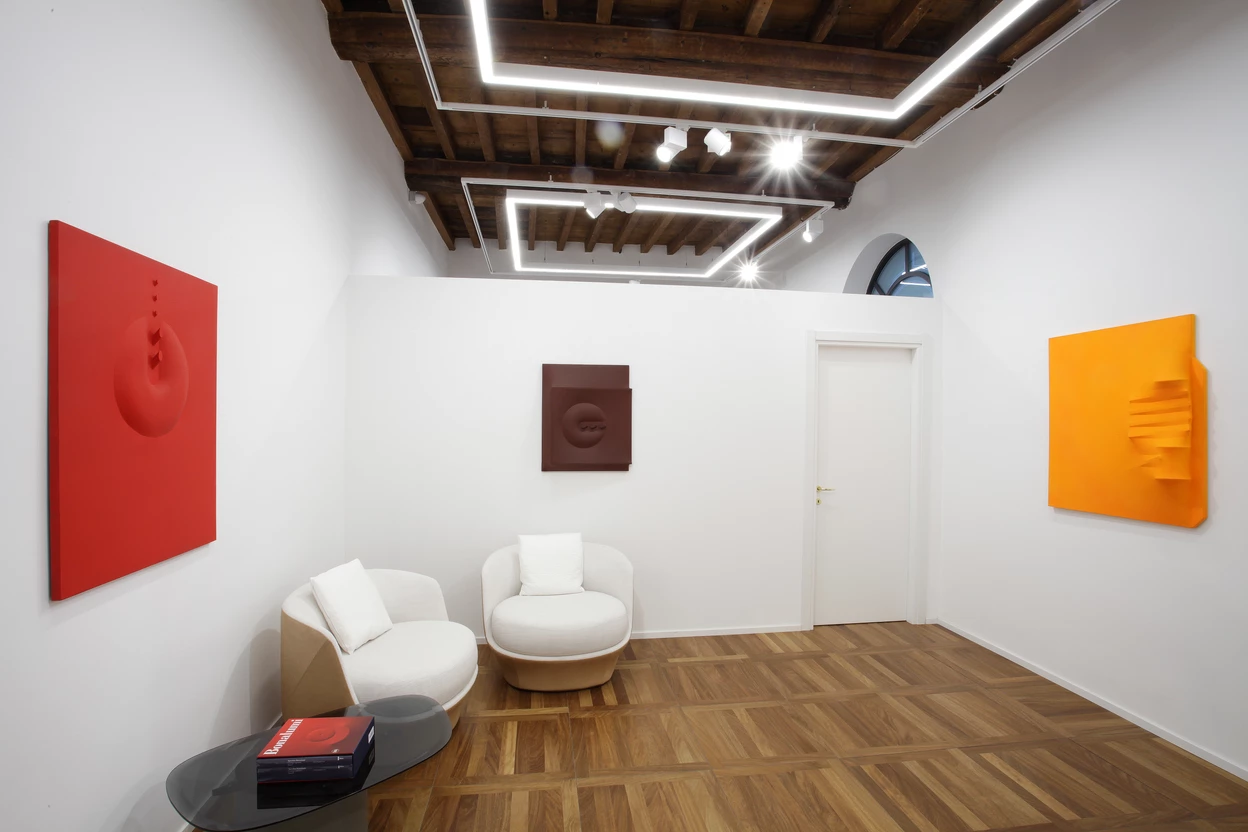RICUCIRE LA TELA (RESTITCHING THE CANVAS) – Cortesi Gallery is pleased to officially inaugurate its new premises at Via Morigi 8 with an exhibition dedicated to Agostino Bonalumi (1935 Vimercate – 2013 Monza), a leading figure in the post-war artistic scene in Italy.
Five years after the first exhibition dedicated to the artist in its London gallery, Cortesi Gallery – with the support and curatorship of Marco Meneguzzo – is proposing an exhibition project focusing on the revolutionary role of this master of the “painting-object”.
The exhibition originated with the concept of the gallery show as a physical research space designed to fulfil two requirements – to exhibit something novel and to call attention to a reality that, while perhaps already known, acquires here a new meaning and interpretation.
Beginning from this premise, Marco Meneguzzo conceived of an exhibition itinerary that passes through the ground floor rooms of Palazzo Morigi, site of the gallery, with a display of works dating from the 1960s through the 1980s. Of special note among these are two masterpieces from the collection of Gillo Dorfles never before seen by the public. This reference to the art critic, painter and philosopher born in Trieste in 1910 is not fortuitous as it allows us to introduce the curator’s second focus. In the early 1960s, observing the work of Agostino Bonalumi, Dorfles coined the term “painting-object”, thereby establishing a rapport of friendship and admiration between the critic and the artist. On a broader scale, the term identified a new artistic typology capable of joining the languages of painting and sculpture in a single object.
This new term encapsulates the revolution brought about by Agostino Bonalumi, from his very first “estroflessioni” made with wood and metal supports that caused the canvas to stretch and deform. In the wake of Lucio Fontana’s radical action, Bonalumi exploited the constructive value of the gesture in painting. Unlike the master of Spatialism, however, Bonalumi sought to give structure to his canvases, rigorously exploring a potential new space made of folds, warps and seams.
With all this in mind, the final aim of the exhibition is to highlight an issue that is too often overlooked in the conversation about Italian artists and their approach to the problem of the surface after Fontana. As Meneguzzo stressed in his text written to accompany the exhibition, clearly, much of the discourse in the 1970s about pictorial support owes a debt to the first “cut”, but it is also owed to the first “seam”. For this reason, we can rightfully speak of Agostino Bonalumi as a “revolutionary constructive” artist who succeeded in overcoming the limits of painting by reformulating its canons.




